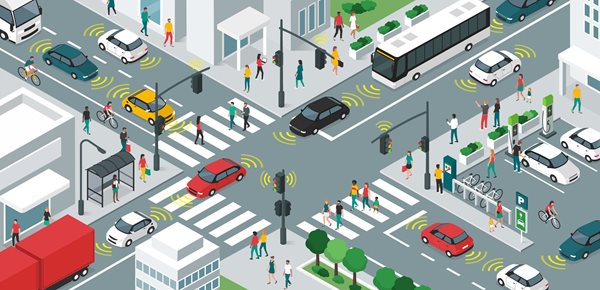
The transport system consists of the transport infrastructure, the means of transport and the processes of transport organization and management. The transport system is very complex and interconnected at the international level as well as at the regional, urban and in some cases even cross-border level. This feature gives transport a specific character, as it is necessary to ensure the functionality and interconnectivity of the transport system in the territories of individual countries. Transport, or the transport system, must comply with the principles of technical
interoperability and continuity of operational procedures.
ITS is used in all types of transport: road, rail, water, air, individual and public passenger transport, and freight transport. It is introduced for higher capacity of the transport route, economic efficiency, safety, control and influence of traffic, reduction of energy consumption, optimization of transport and transport processes, elimination of harmful effects on health and environment. Each mode of transport uses different components for ITS implementation based on its needs and requirements.
Intelligent Transport Systems include operational procedures (organizational aspects), systems and equipment (hardware) that improve transport and mobility of people and goods through the collection, transmission, evaluation, and distribution of information, as well as allowing the results obtained to be evaluated and quantified. The main purpose of ITS is to be a tool for the provision of quality transport services whose conditions of provision and traffic information are predictable and understandable to users.
In ITS there are both (intelligent)
infrastructure and (intelligent)
means of transport interact with each other. Other active participants in the traffic or transport process, equipped with appropriate equipment and means, also interact with each other. Through ITS, for example, intelligent infrastructure can provide real-time, high-quality traffic or travel information, e.g. dispatchers of transport undertakings or integrated systems can give organizational and control instructions to vehicles, or vehicles can communicate with other vehicles as well as with equipment on the infrastructure to improve safety and traffic flow, reduce energy consumption or travel time.
ITS systems represent a globally influenced industry that, due to its geographical complexity and the wide range of interests of the different actors, requires the establishment of basic rules and parameters for products, technologies, systems, and services. The development of ITS is thus directly linked to international activities, whether they are carried out only in the Czech Republic or abroad.
The role of the Ministry of Transport (MoT) is to guarantee the conceptual system development of ITS. At national level, the MoT creates, and at EU level co-creates, the regulatory framework for ITS implementation and supports research and development in this area. The state owns considerable assets in the form of transport infrastructure, traffic management infrastructure and public passenger transport systems, which need to be developed also by transferring the results of research, development, and innovation projects into practice.